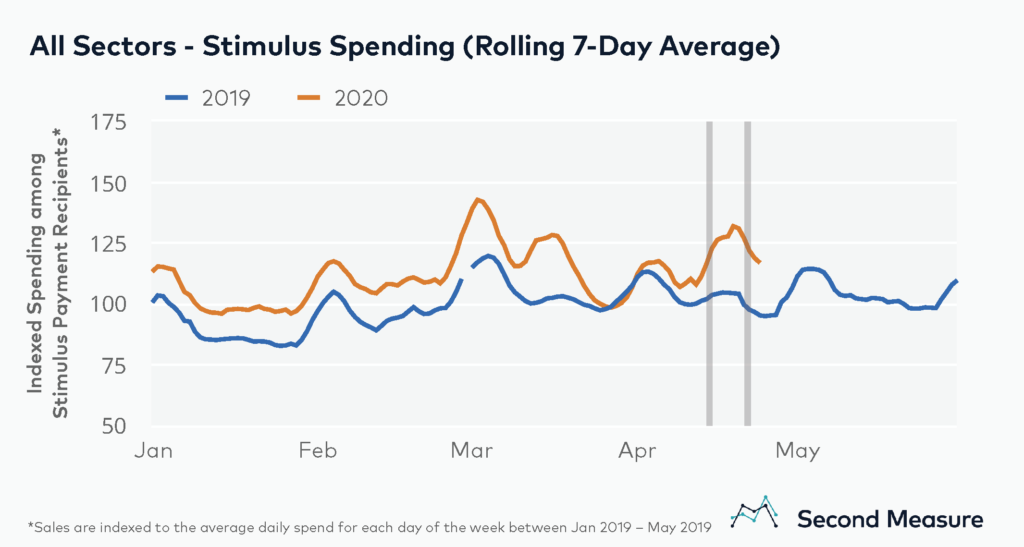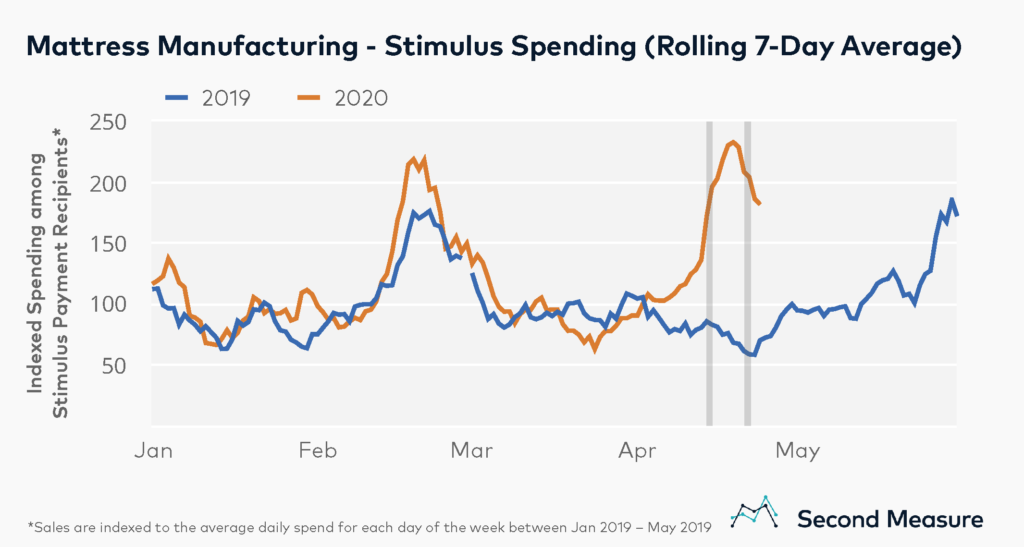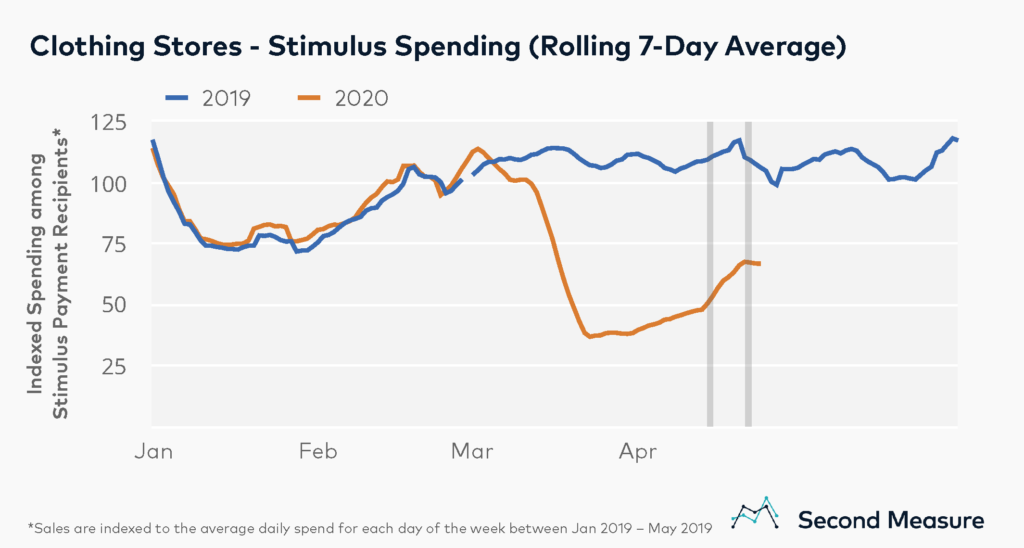NOTE: Bloomberg Second Measure launched a new and exclusive transaction dataset in July 2022. Our data continues to be broadly representative of U.S. consumers. As a result of this panel change, however, we recommend using only the latest posts in assessing metrics, and do not support referring to historical blog posts to infer period-over-period comparisons.
In response to the coronavirus pandemic, the U.S. government has begun issuing economic impact payments via the IRS to qualifying Americans. To date, the majority of stimulus payments hit bank accounts on April 14, 15, 21, and 22. These cash infusions are helping U.S. consumers cover their basic expenses as well as stimulating the economy at large.
By identifying members of our U.S. consumer panel who have received a payment, our latest analysis measures the relative impact of stimulus on spending behaviors. Data through April 24 reveals that, across all sectors, the 7-day average of spending among stimulus payment recipients is up 23 percent year-over-year.

Our analysis of all sectors aggregates data from over 4,500 major U.S. companies and does not include sales at local brick-and-mortar businesses, B2B spending, or cash transactions, all of which may be impacted by COVID-19 to a greater degree. Consumers included in this analysis received a full stimulus payment of $1,200 or higher, including single and joint filers with any number of dependents and excluding those who received a partial stimulus payment.
Stimulus recipients prioritize good sleep
With an extra grand in hand, some Americans are putting their stimulus payments toward big-ticket purchases. An analysis of over 20 mattress companies reveals that stimulus recipients have spent more on mattresses in recent weeks compared to 2019. As of April 24, payment recipients spent over 150 percent more, on average, over the course of the prior week relative to the same window last year.

Mattress retailers with well-established direct-to-consumer product lines are best positioned to see an increase in sales as shelter-in-place orders remain in effect across many states, keeping Americans out of brick-and-mortar stores. Among all U.S. consumers the week of April 13-19, online mattress retailer Casper saw sales double year-over-year.
Apparel industry recovery aided by stimulus
Apparel retailers, especially those with a large brick-and-mortar presence, have been hit hard by the coronavirus pandemic, with stores like Neiman Marcus and J. Crew filing for bankruptcy as a result. Among the nearly 600 clothing, accessory, and shoe stores analyzed, signs of recovery appeared as early as late March. However, the arrival of stimulus payments has accelerated spending in this industry.
On March 30, the prior-week average for clothing spending was down 66 percent year-over-year among stimulus recipients. By April 13, average spending was down 56 percent, rising 10 percentage points throughout the two week period. Once the first wave of stimulus payments hit on April 14, spending averages rose another 19 percentage points, now down 37 percent as of April 24.

Like mattress brands, evidence suggests that retailers with a more robust online presence prior to the pandemic are poised for a quicker recovery. In 2019, 42 percent of spending at Urban Outfitters was online, versus just 19 percent at H&M. Among all U.S. consumers, sales the week of April 13 are down 32 percent year-over-year at Urban Outfitters, while sales from the same period at H&M are down 84 percent.
To see the latest on stimulus spending within these industries as well as our broader insights on COVID-19’s impact, request a demo today.
